Scene 7: Physical objects
Is it better to let ChatGPT generate prompts?
I have used ChatGPT to assist me in generating prompts, but I did not use the Role mode. Instead, I let it:
- Translation: I know what I want, but don't know how to describe it in English.
- Answer: I need some style words, but when I don't know what to input, I will ask ChatGPT questions like "What are the famous artists during the Renaissance period?"
Why didn't I use the Role mode?
Indeed, letting ChatGPT generate content for me in Role mode is more efficient and time-saving.
However, personally speaking:
It's a bit complicated to use because you need to input many prompts. Even if you save them through an app and reuse them multiple times later on, you may exceed token limits and have to re-enter everything again.
From the principle of ChatGPT itself, it can only generate "ordinary" content that is difficult to exceed expectations. It's just that most people cannot even achieve this level of quality which is why they are amazed by its effectiveness.
Therefore if you want original stunning graphics generated by probability alone won't suffice; imagination plays a crucial role as well.
However, this is just my personal opinion. If you find this method more efficient for yourself then go ahead with it.
It doesn't matter; a good tool should be one that suits your needs.
Toys
Okay, getting back on track. Starting from this chapter, we will gradually enrich our prompt framework to add more details to the images. The first real-life scene generated is a toy scene, which is a very interesting scenario.
In addition, if this scene can be combined with a 3D printer, I think it would be really cool. I wonder if there are any enthusiasts who can make it happen.
To explain further about the updates to the prompt, starting from this image of real-life toys, I will change "background" to "environment", which includes the main environment such as background and lighting.
| prompt | explain | |
|---|---|---|
| Type | product photography | / |
| Main Body | Stormtrooper, plastic, toy | Continuing with the examples of Stormtroopers and Darth Vader. Because most figurines are made of plastic toys, two words were added. |
| Environment | white background, studio lighting | To highlight the figurines, emphasize the white background and lighting: add some lights to accentuate the product. |
| Composition | null | Not important, just let AI play freely. |
| Lens | null | Not important, just let AI play freely. |
| Style | hand painted, | / |
Another is the blue-eyed white dragon in the game king, but unfortunately Midjourney does not know what is Yu-Gi-Oh, can only literally generate a:
| prompt | |
|---|---|
| Main Body | Blue-Eyes White Dragon, plastic, toy |
The following images were generated:
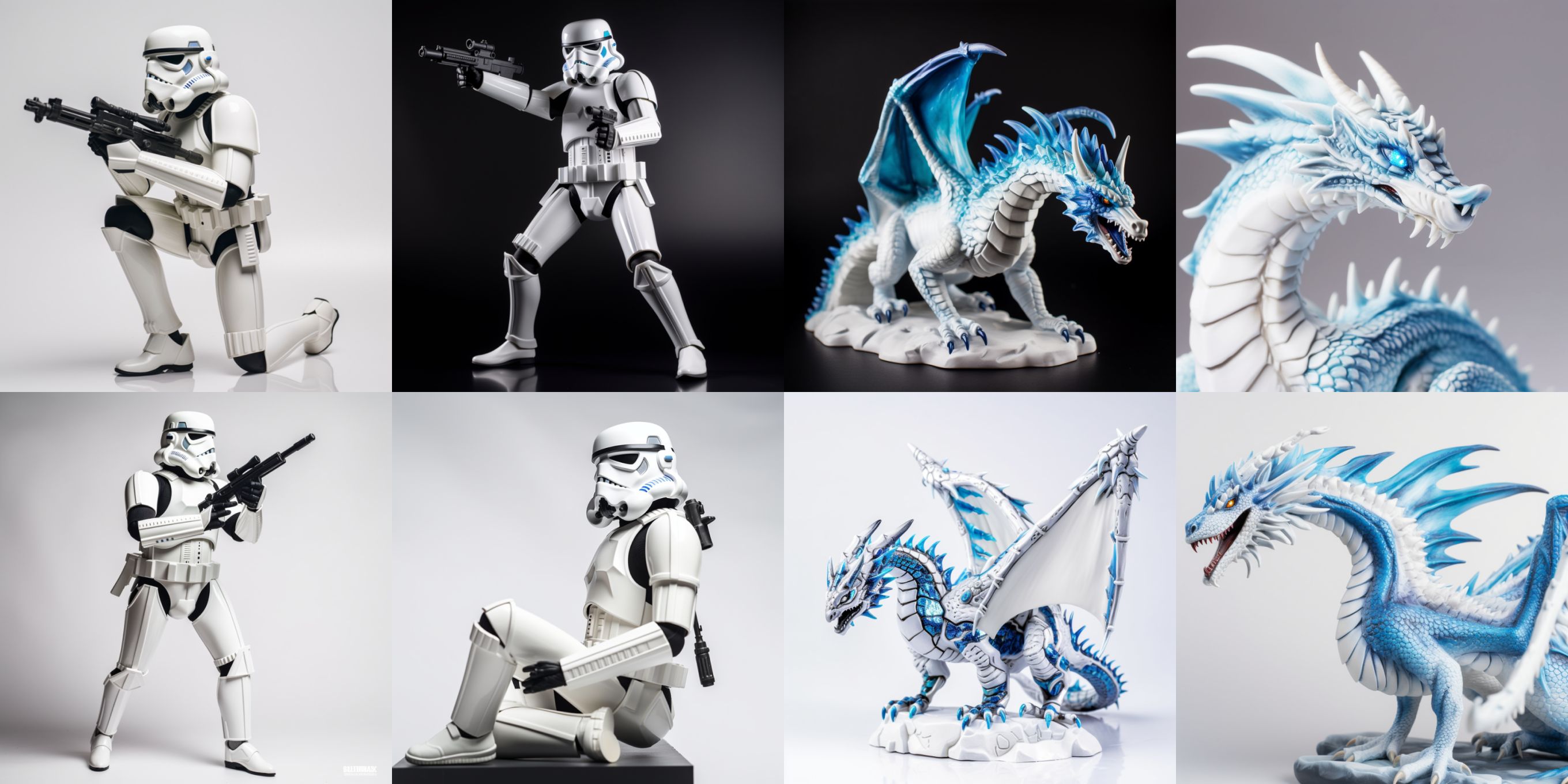
Also, I find that Midjourney supports American anime or film productions much better, such as Dragon Mother in A Song of Ice and Fire (only the dragon is a bit creepy), and Joan of Arc:
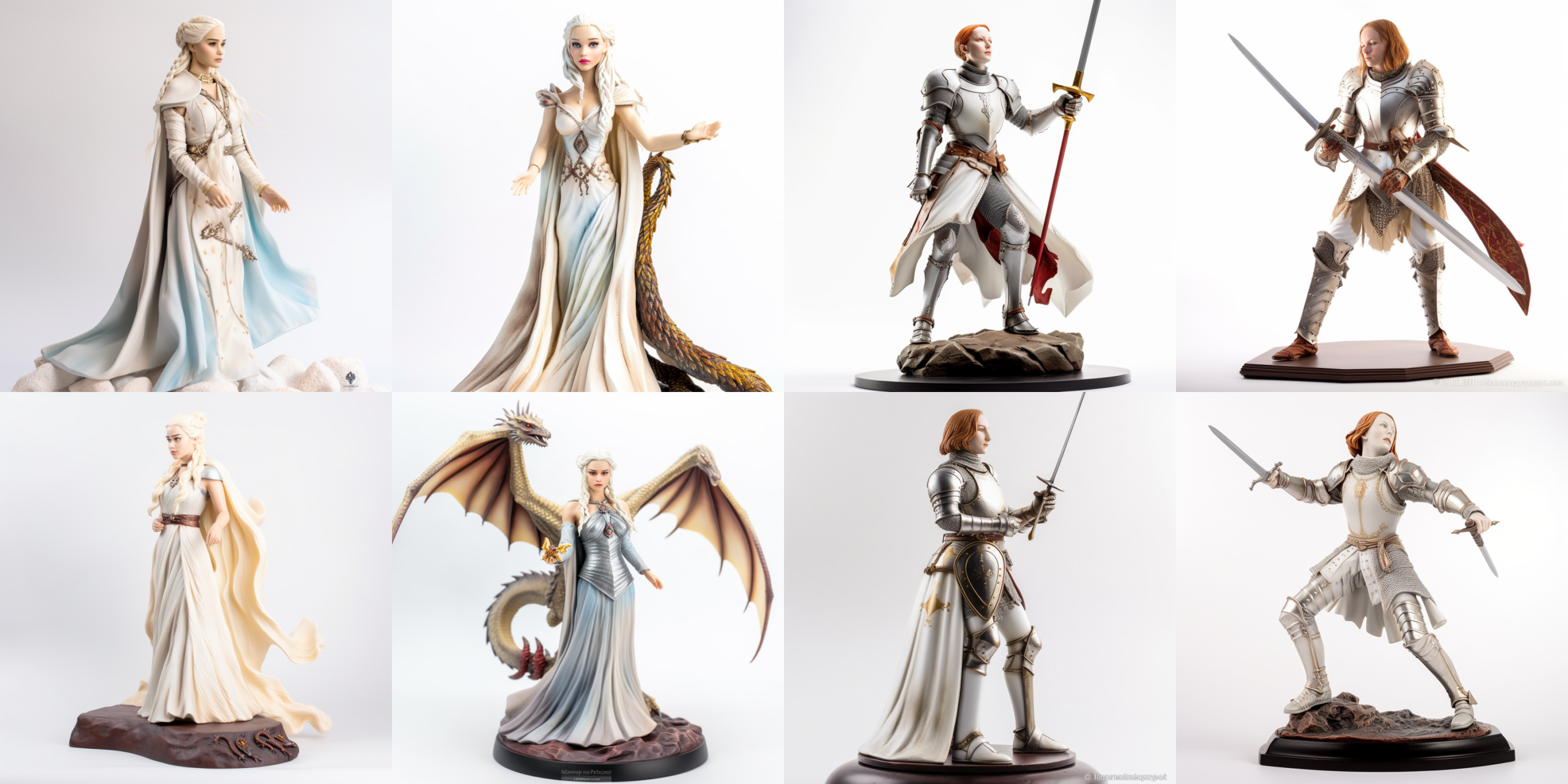
Tip 11: Adding Style - Nationality
When it comes to figurines, most people would immediately think of Japan. Here's another tip: you can add Japanese style in the prompt to create a Saint Joan of Arc figurine and use the logo we made earlier as an example.

Joan of Arc is not a kind of FF feeling, the logo is also relatively simple, the appearance of the cat is also a bit like the appearance of the cat in the anime, of course, in addition to Japanese there are Chinese (4 left), and even African Style::
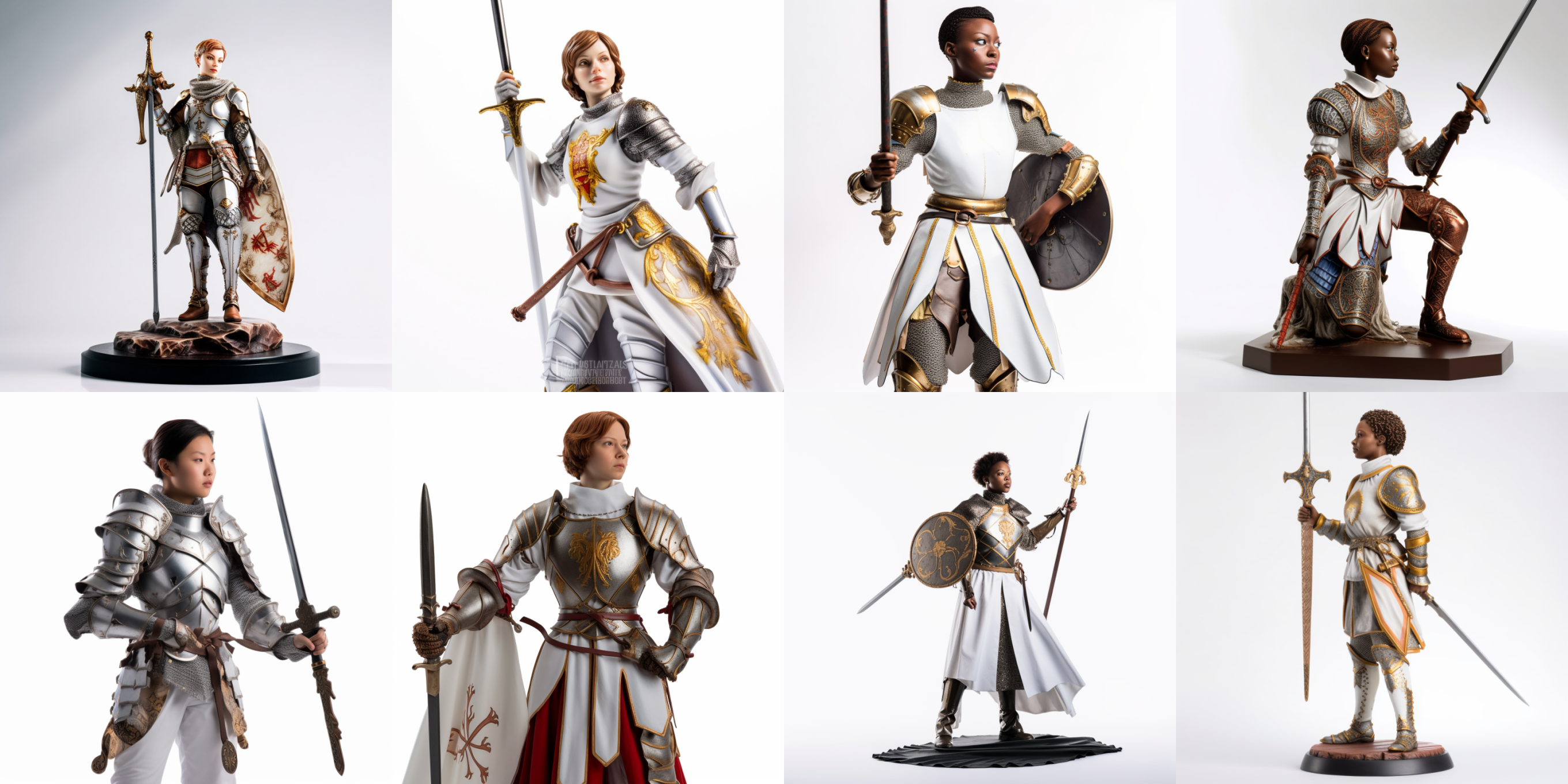
Tip 12: Increase Weight
Have you noticed that the results generated by the Chinese figure prompt above seem to only have one Chinese face in the third image? The reason is that the weight of Chinese style is too low, so only one result is output.
In your practice, you will definitely encounter situations where AI ignores certain prompt words, such as mentioning a bird in the picture but it doesn't appear.
Why does this happen?
The reason is that Midjourney's prompt weights are gradually reduced in order (see Midjourney's official FAQ translated by me for details).
In our above prompt, we put Chinese Style at the end, so there are fewer results generated.
As for ignoring certain words, this reason remains unknown for now but it is likely due to weight issues.
There are many ways to increase weight.
The simplest method is to adjust the order, such as putting Chinese Style at the beginning (then generating results with squinty eyes style 🤣 - I did it twice and got better results on my second try).
product photography, Chinese Style,Joan of Arc, full body, hand painted, plastic, detailed, white background, studio lighting
Adjust the order, the effect is very different, so you do not believe in the so-called prompt templates, try more.
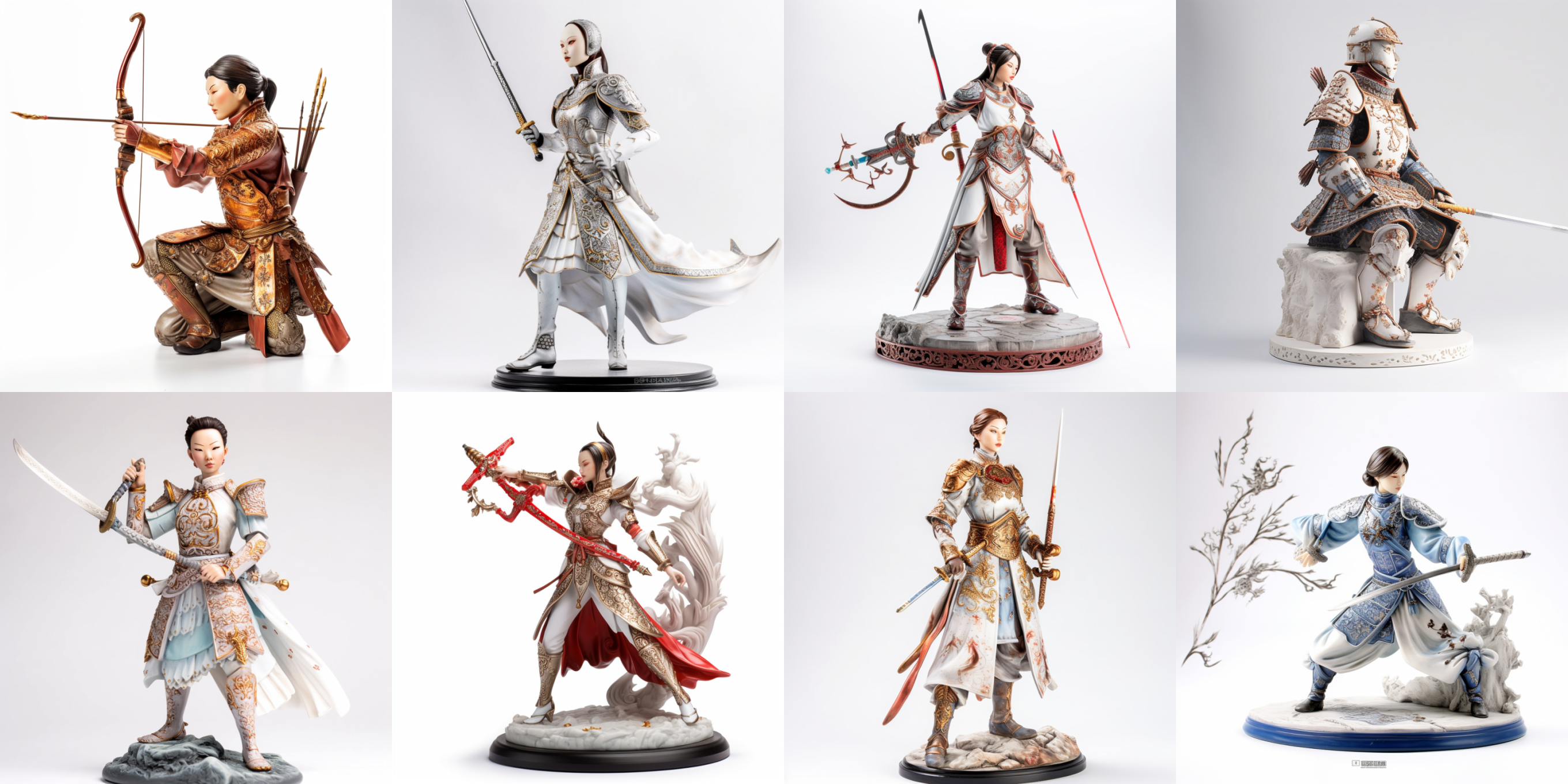
The second method is the Slider method.
You need to add , at the end of the prompt, then add the words you need to adjust the weight, then add , and finally add the weight value. For example, as in the example above, if I want to highlight Chinese style but don't want to adjust the order, I can change it to
product photography,Joan of Arc, full body, hand painted, plastic, detailed, white background, studio lighting, Chinese Style :: Chinese Style :: 0.5
Then you will find that the weights are too high, generating a graph that is not related to prompt (below left), so we can add the weights of Joan of Arc to the original (below right):
product photography,Joan of Arc, full body, hand painted, plastic, detailed, white background, studio lighting, Chinese Style :: Joan of Arc:: 0.25 style of Chinese:: 0.5
You can see that after adjusting the parameters, 2 of the 4 resulting images have a strong Chinese style:

But frankly speaking, this method, is not particularly suitable for this case, adjust the main content, or order, ROI will be higher, this method is more suitable for miss drop a prompt word when used, such as the official case is this:
several sad cats watch a crying woman in a home-office environment with laptop
Generated pictures (four pictures on the left), the cats are looking at you (you may be the crying woman 😂), if you use the function of slider (four on the right), crying woman will appear in the picture:
several sad cats watch a crying woman in a home-office environment with laptop:: several sad cats::0.5 crying woman::0.6 laptop::0.7
Additionally, it should be noted that the available parameters for the slider are 0.25, 0.5, 0.6, and 0.7. This method can also be used to decrease weight with intervals of -0.7, -0.6, -0.5, and -0.25.
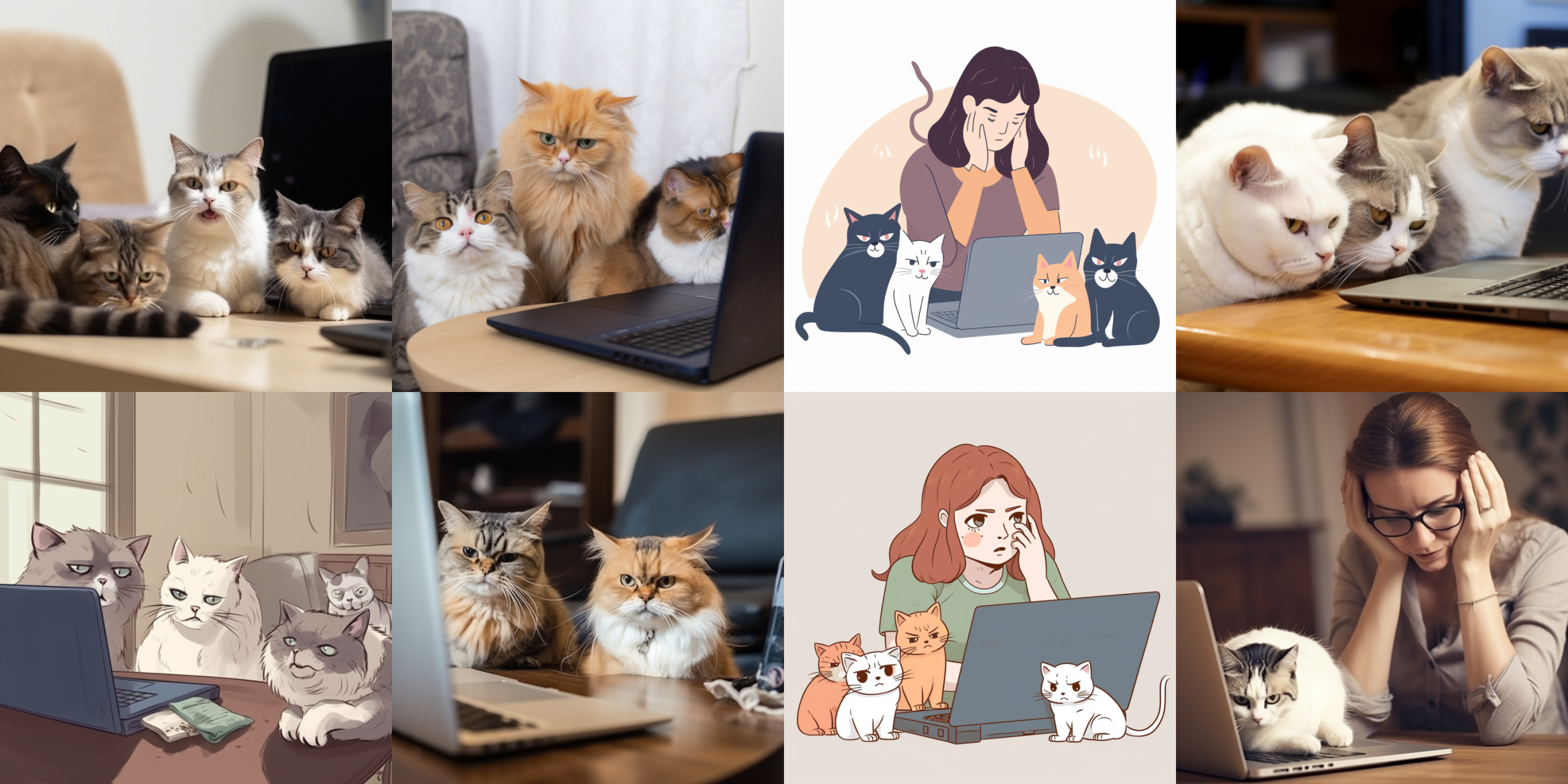
If you have used the slider but still cannot see the expected image, there is another trick called cowbell. To be honest, this does not comply with Midjourney's official best practices, but it is indeed a feasible method. Take the following prompt as an example: in the generated images, the woman does not look shy (the left four pictures).
A songbird sits on the shoulder of a shy blonde woman dressed in white.
At this point you can repeat and repeat and repeat (I think that's why the method is called cowbell):
A songbird sits on the shoulder shoulder shoulder shoulder shoulder shoulder of a shy shy shy shy shy shy shy blonde woman dressed in white.
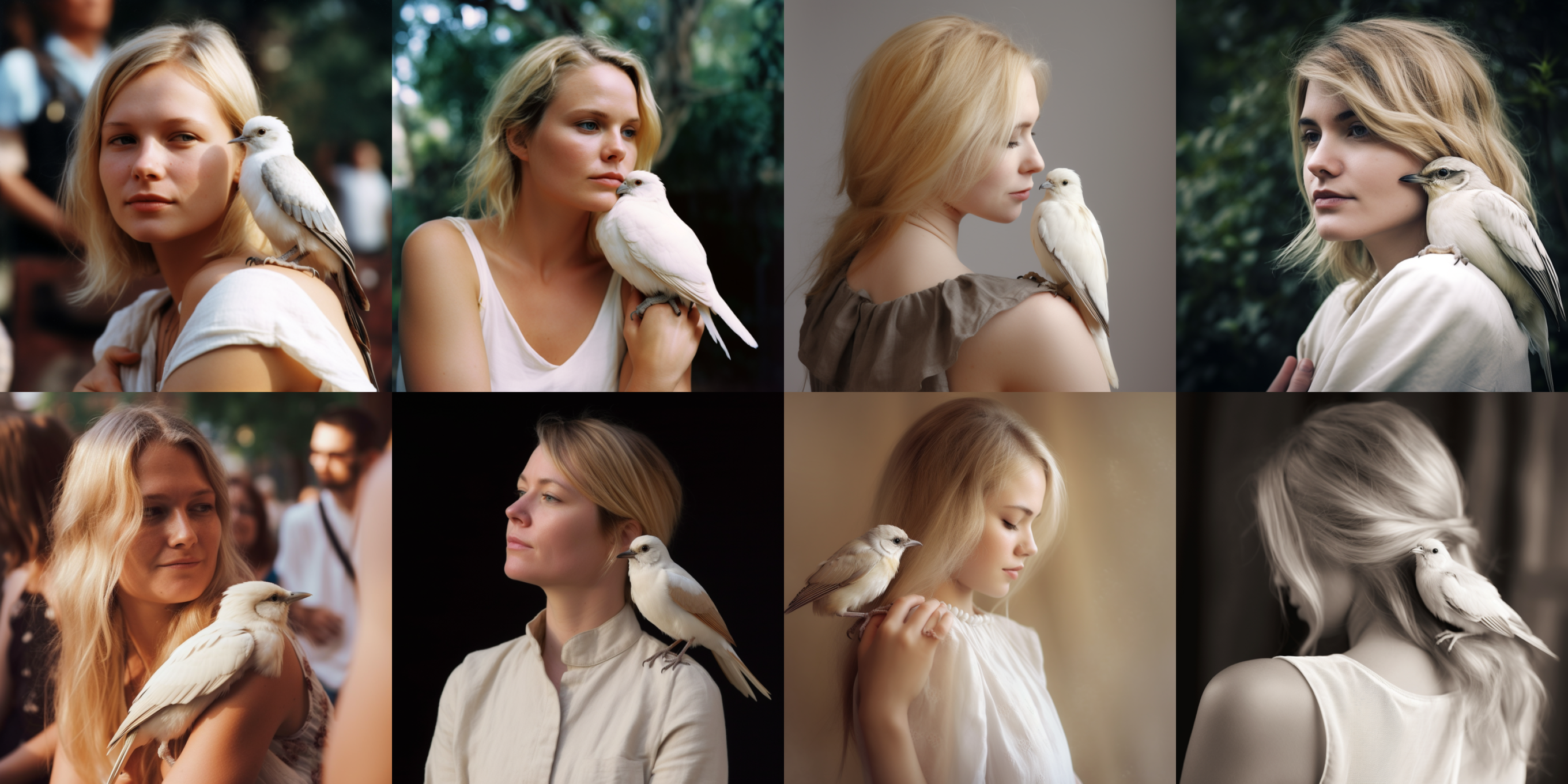
Food
Another object that I particularly like is food. When it comes to food, the emphasis is on "color, aroma and taste", so when describing prompts related to food, you can think in these three directions:
- Color: What color is the food (which can be controlled by the degree of ripeness)?
- Aroma: Photos don't have a scent, but we can depict fragrance.
- Taste: Similarly, photos don't have a taste either. So how about adding some detailed decorations? For example, sprinkle some pepper, salt or chili?
| prompt | explain | |
|---|---|---|
| Type | food photography | / |
| Main Body | steak, medium rare, steaming, light garnishes, sitting on plate | / |
| Environment | epic lighting | In order to highlight the food, I added a spotlight. |
| Composition | null | Not important, just let AI play freely. |
| Lens | depth of fieldnull | / |
| Style | null | Not important, just let AI play freely. |
| Parameters | null | no parameter |
Then a bowl of braised beef noodles:
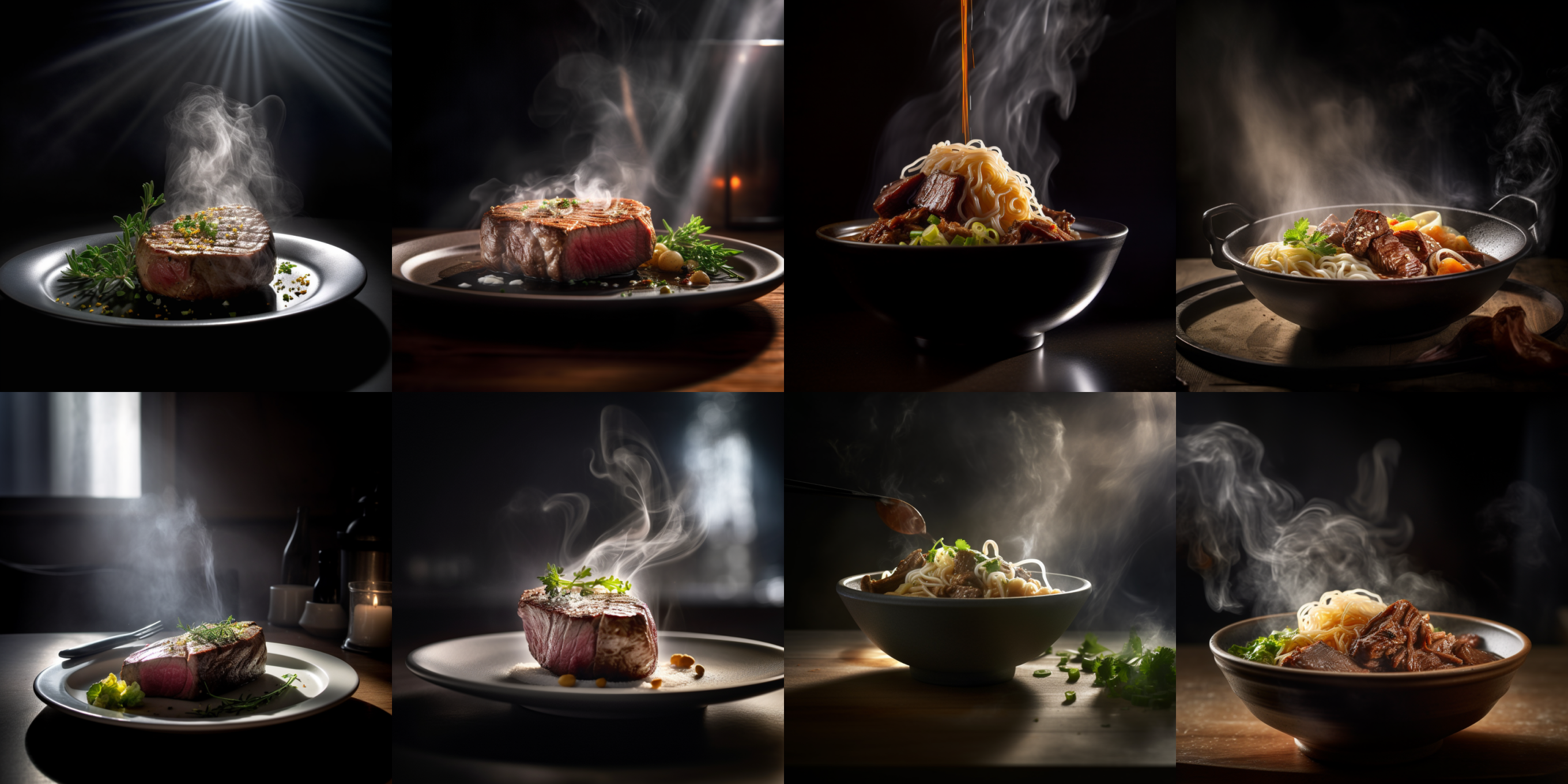
Tip 13: Make Good Use of Lighting
To be honest with you, I am not a designer or photographer (and I am very bad at photography), so all I can share with you are some basic concepts.
For me, there is too much procedural knowledge involved in this topic that I have never actually put into practice.
That being said, there are several commonly used types of lighting in photography:
- Key Light: The key light is one of the most basic forms of photographic lighting and is usually placed directly in front or to the side of the subject being photographed. It illuminates the main subject and determines its primary brightness level. The key light is typically the brightest source of light.
- Fill Light: Fill lights are used to fill in shadows created by the key light and adjust their depth to make photos brighter. Typically, fill lights should be less bright than key lights to avoid overexposure.
- Back Light: Backlights illuminate the backside of subjects being photographed and help distinguish them from backgrounds while making their outlines clearer. They are often used for photographing bony structures, heavy objects, backlight effects etc.
- Ambient Light: Ambient light refers to natural lighting produced by a photo environment such as indoor illumination, natural sunlight or street lamps etc., which can supplement surface details on subjects being photographed and enhance photo realism.
- Special Lights: Special lights are usually employed for creating certain moods or expressing specific meanings such as candlelight or spotlight effects etc.. They can produce warm romantic mysterious scenes and atmospheres that explore artistic imagination and creativity.
By combining these different types of lighting arrangements together you will get various scenarios where they could be applied effectively.
You may check out my summarized Lighting List for more detailed information about each type if interested; here I mainly share some common yet easy-to-use scene-specific lighting setups.
| Photo | Name | Describe | Suitable Scenes |
|---|---|---|---|
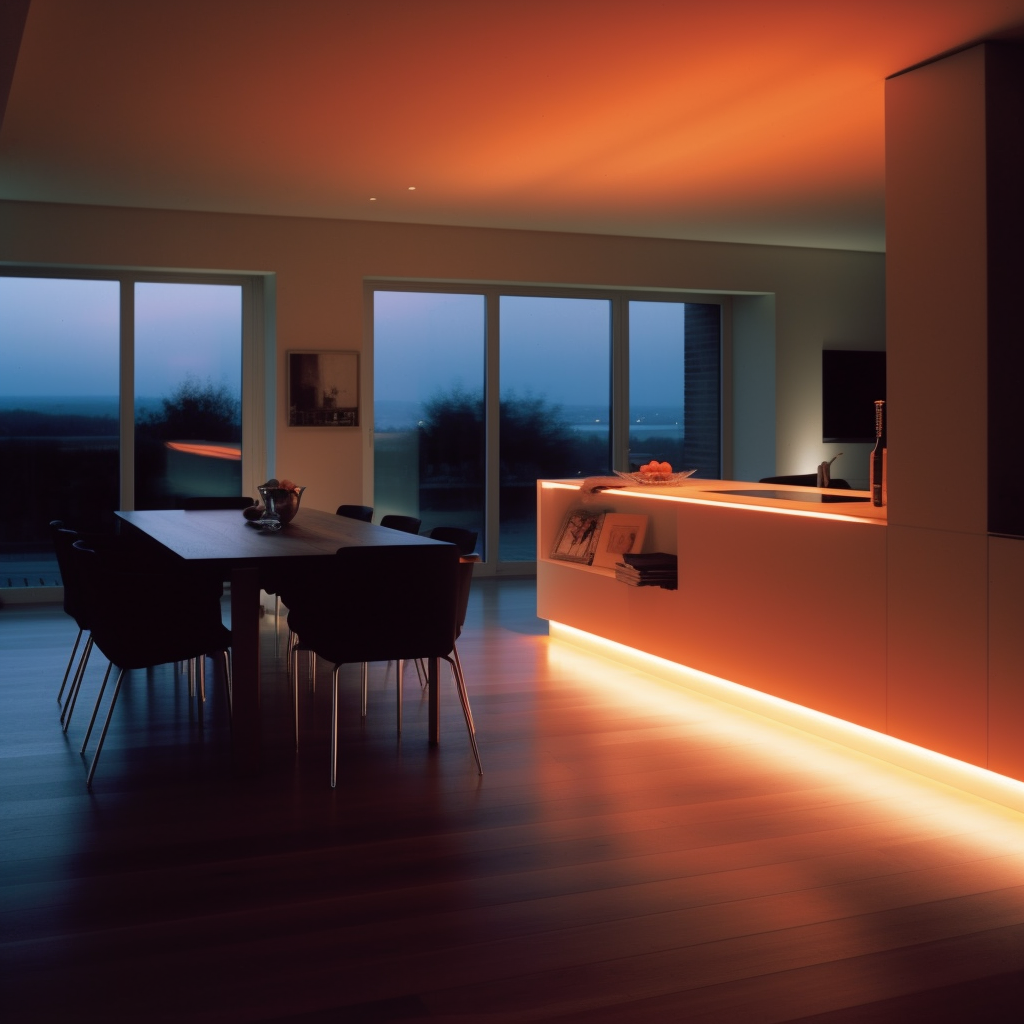 | Mood Lighting | Mood lighting. It mainly creates a specific atmosphere by changing the color and brightness of the light in a particular environment, to create feelings of comfort, romance, relaxation, etc. From a technical perspective, mood lighting focuses on controlling the color and brightness of the light to create strong visual effects. | Mood lighting is usually used in interior design, hotels, restaurants and home decoration fields with an aim to create a specific ambiance and experience. |
 | Moody Lighting | Moody lighting. It emphasizes the application in emotional expression and serving the story plot, and is designed to perfectly combine lighting with the plot to showcase characters' personalities and emotional worlds. Technically, Moody lighting usually uses low brightness and large-scale occlusion shadows, emphasizing scanning of dark areas to increase texture and layering of images. | Moody lighting is often used in film production, game interfaces, stage performances, etc., with the aim of increasing dramatic effects in storytelling. |
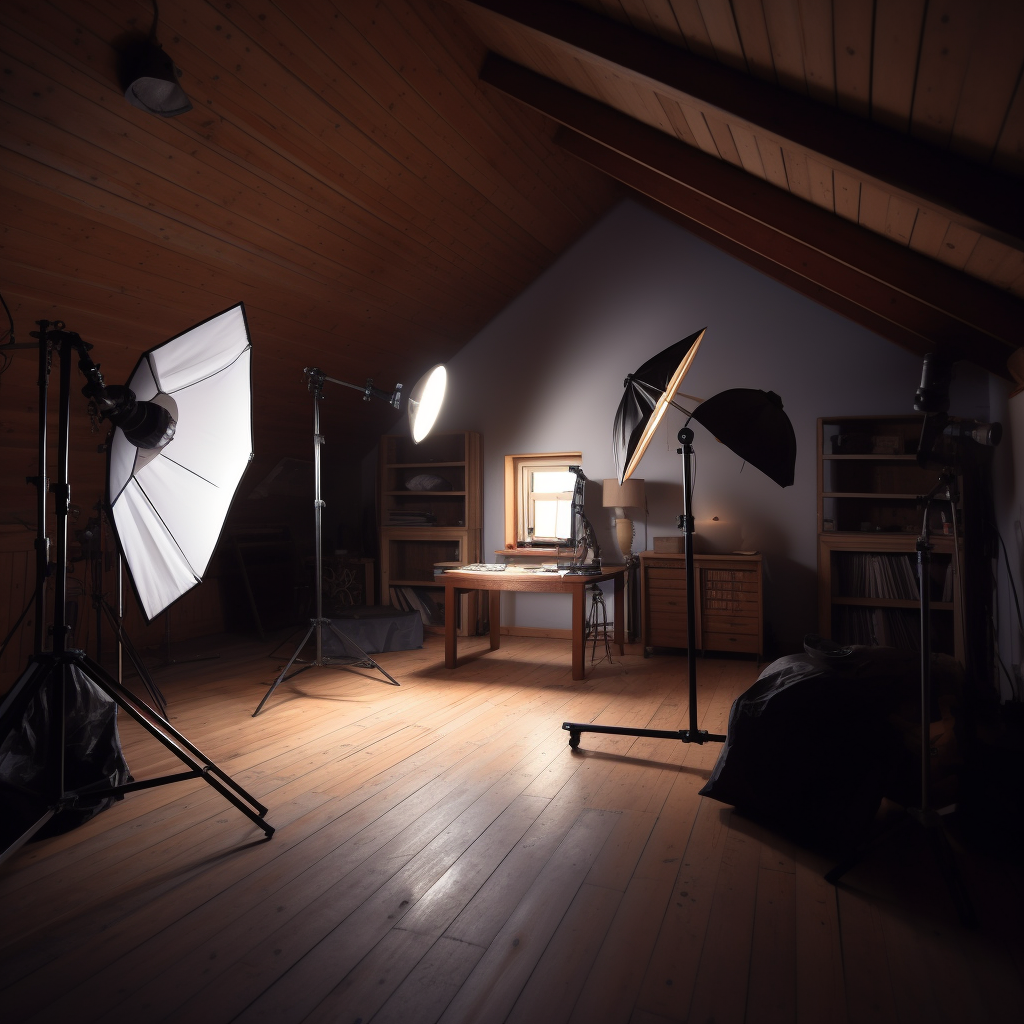 | Studio Lighting | Studio lighting is a type of lighting design specifically used in photography studios, television and film industries. It places light sources and fixtures in a dedicated photography studio to create various atmospheres and scene effects through precise lighting, meeting different shooting needs. | Studio lighting is mainly applied in commercial photography, fashion photography, art photography, portrait photography, advertising shoots, film and TV production to highlight the subject's characteristics with refined lighting design for optimal shooting results. |
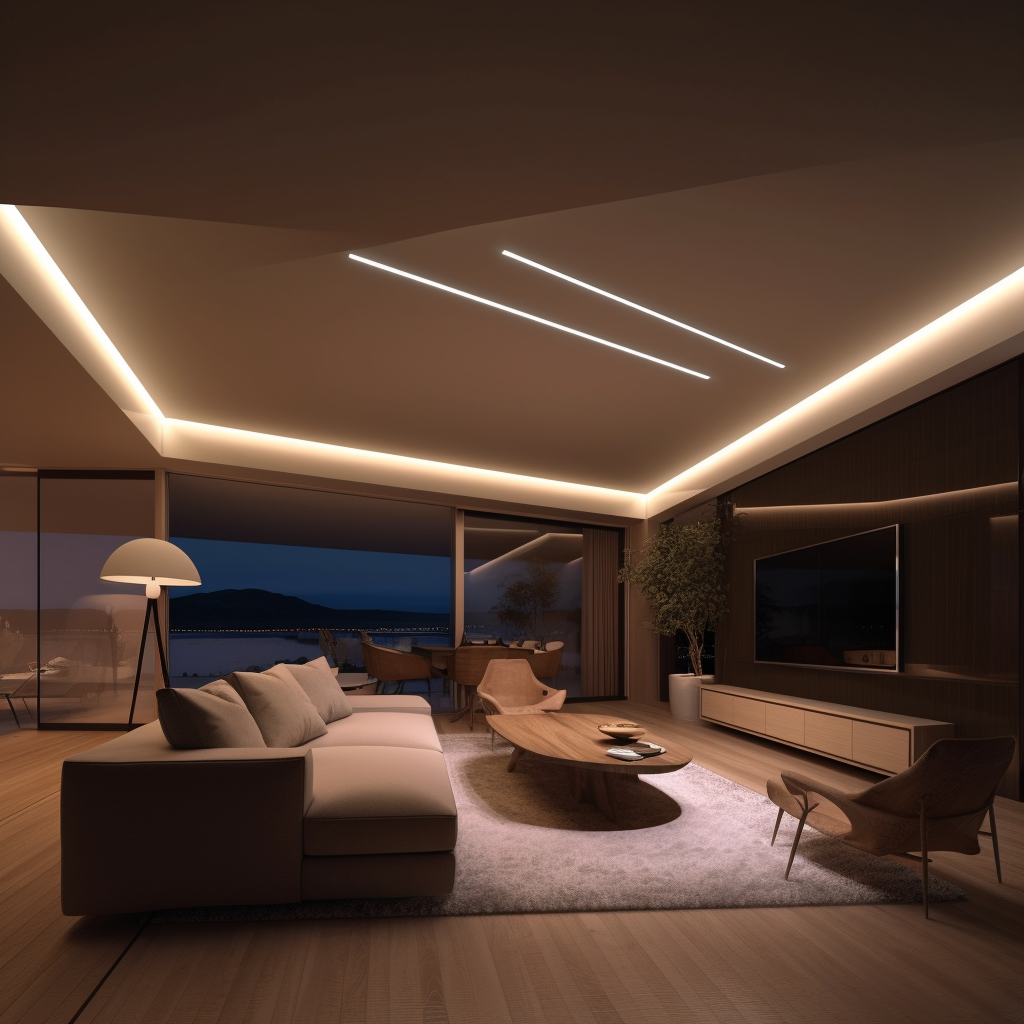 | Cove Lighting | Corner lighting. It is a commonly used indoor lighting design, and its fixtures are usually installed in the corner (i.e. "closet") between the wall or ceiling cabinets, creating a comfortable, soft, and smooth ambient lighting effect. | This lighting technique can provide even light for the room while enhancing its aesthetics and modernity. |
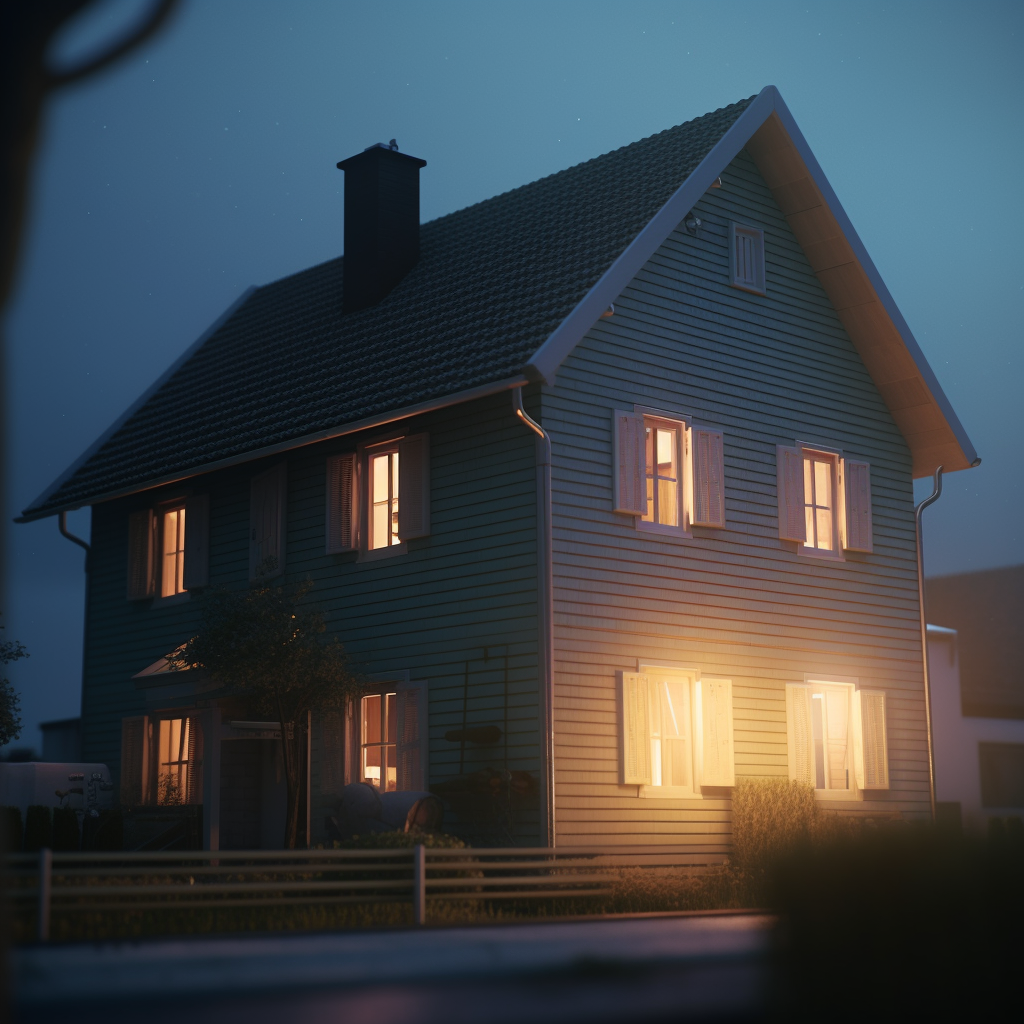 | Soft Lighting | Soft lighting refers to the use of soft and diffused light to create a gentle and warm atmosphere effect. Soft light is usually achieved through the use of diffuse fixtures, such as wall lamps, table lamps, reading lamps, etc. | The soft lighting effect can reduce brightness, alleviate visual fatigue and create a comfortable atmosphere and feeling. |
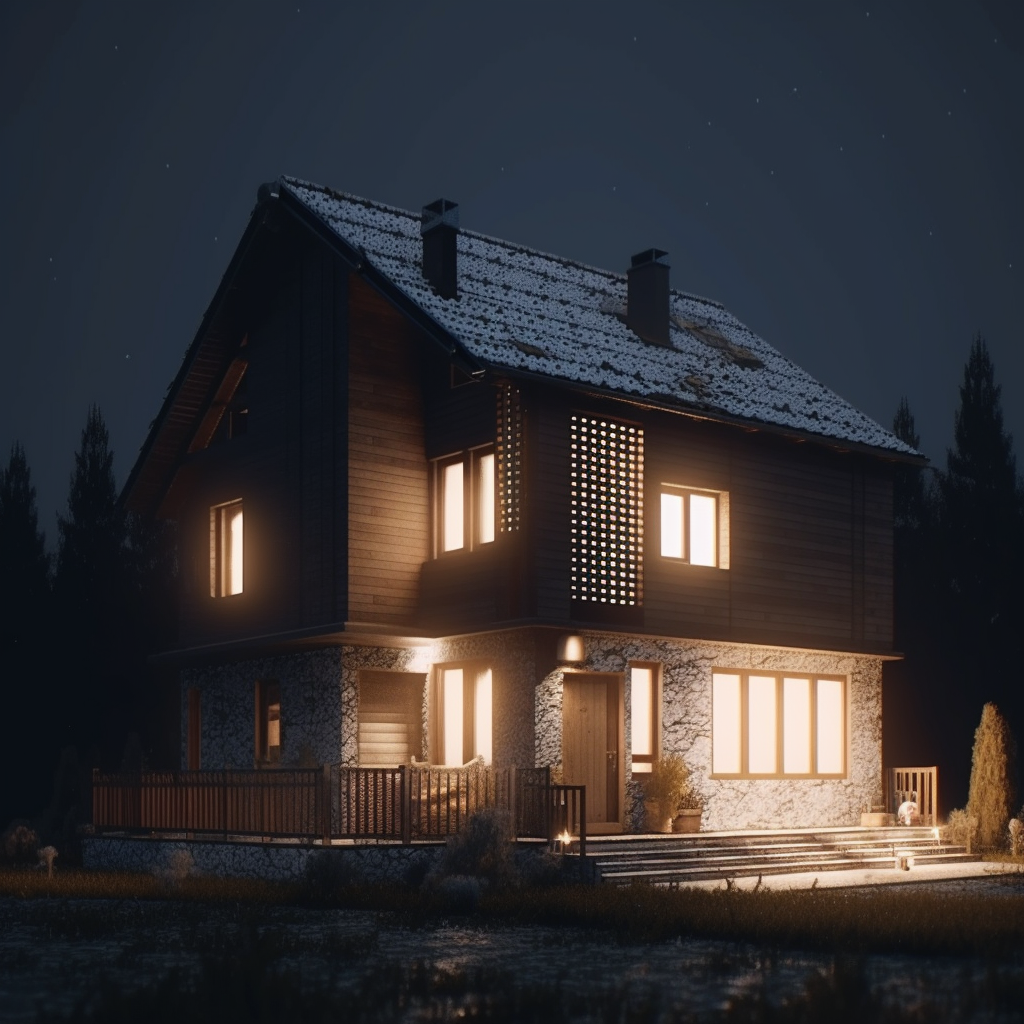 | Hard Lighting | Hard lighting refers to the use of spotlights, tube lights and other lamps to focus on a specific area, with relatively concentrated and direct light. It creates a rigid and bright lighting effect. | Hard lighting is often used in display occasions such as art galleries, shopping malls and other environments to highlight the characteristics and texture of exhibits or products. |
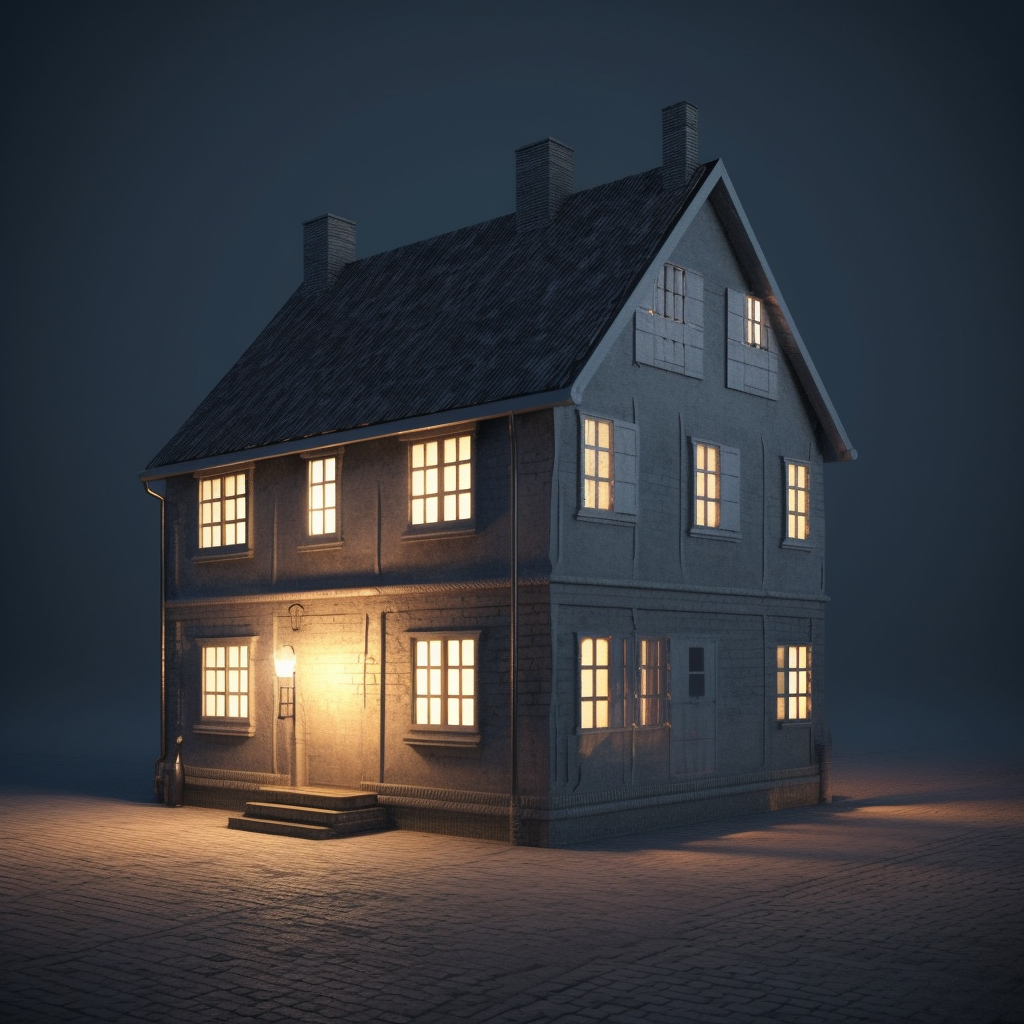 | Volumetric Lighting | Volumetric lighting is a lighting effect technique that creates realistic rendering effects. It simulates the phenomenon of particles and dust in the air by adding lights and various visual effects such as diffusion, fog, particles, shadows etc. to certain scenes in order to create dynamic, realistic, enhanced stereoscopic and volumetric lighting effects. | This technique is suitable for various scene designs such as movies, TV shows, video games and animations. It can make scenes more realistic and three-dimensional while increasing tension and visual hierarchy of the scene with more expressive visual effects. |
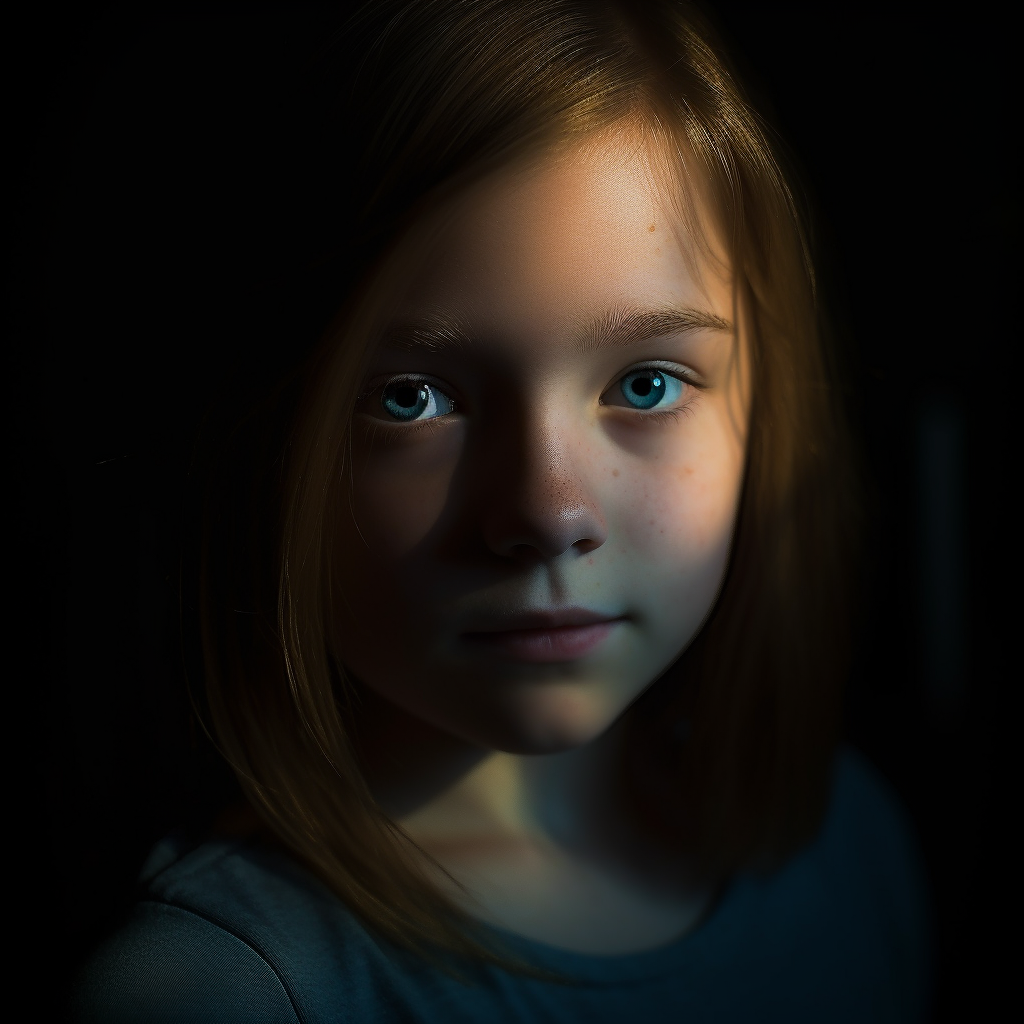 | Low-key lighting | Low-key lighting refers to a special lighting effect that is usually created by strong sidelight or backlight and shadows to create a high-contrast image. The characteristics of low-key lighting are distinct light and dark areas, heavy shadows, and dominant dark tones, often creating a tense, mysterious or dark atmosphere. | Low-key lighting is widely used in fields such as film, television, photography, etc., often used to express suspenseful, terrifying or criminal elements. |
 | High-Key Lighting | This lighting effect avoids the contrast between light and dark and suppresses the appearance of shadows by using bright and uniform light. The characteristics of this lighting effect are high brightness and rich details, suitable for scenes and environments that need to convey a pleasant, relaxed, and happy atmosphere. | High-key lighting is usually used in advertisements, emotional movies, TV dramas, etc. |
 | Epic Light | It is a lighting technique that creates dramatic, majestic and visually stunning effects. It adds bright, grand and spectacular light to the scene to attract audience attention and increase the impact of the setting. Epic Light is commonly used in film production, game development, performances and other fields to create a sublime, magnificent and grand atmosphere that leaves viewers feeling amazed and unforgettable. | The characteristics of Epic Light are high brightness and vivid colors which are usually used to highlight important plot points such as laser weapons, suns and stars in space battles or mysterious lights in fantasy movies or video games. |
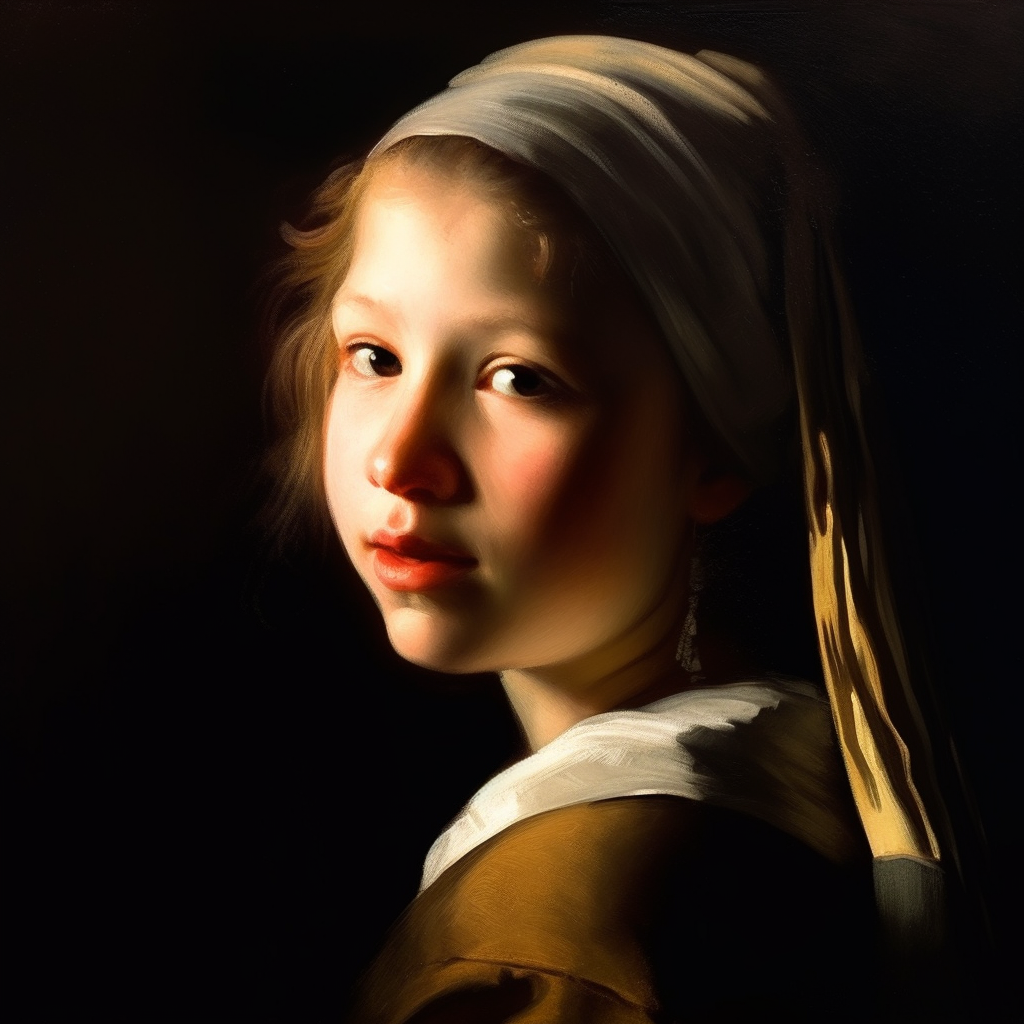 | Rembrandt lighting | Rembrandt lighting is a lighting effect originated from the Dutch painter Rembrandt. Its main feature is to create a diamond-shaped boundary between light and shadow on the face of the subject, with one side of the mouth and chin covered in shadow while the other side is illuminated by light. | It can create a soft and mysterious effect. |
 | Contre-Jour | refers to the photographer placing the light source behind the subject, creating an effect that appears in front of the lens and forming a negative film shape with clear contours of the subject. | The overall blurring caused by the position of the light source, high contrast, and distinct contour lines can bring about an artistic and abstract atmosphere. |
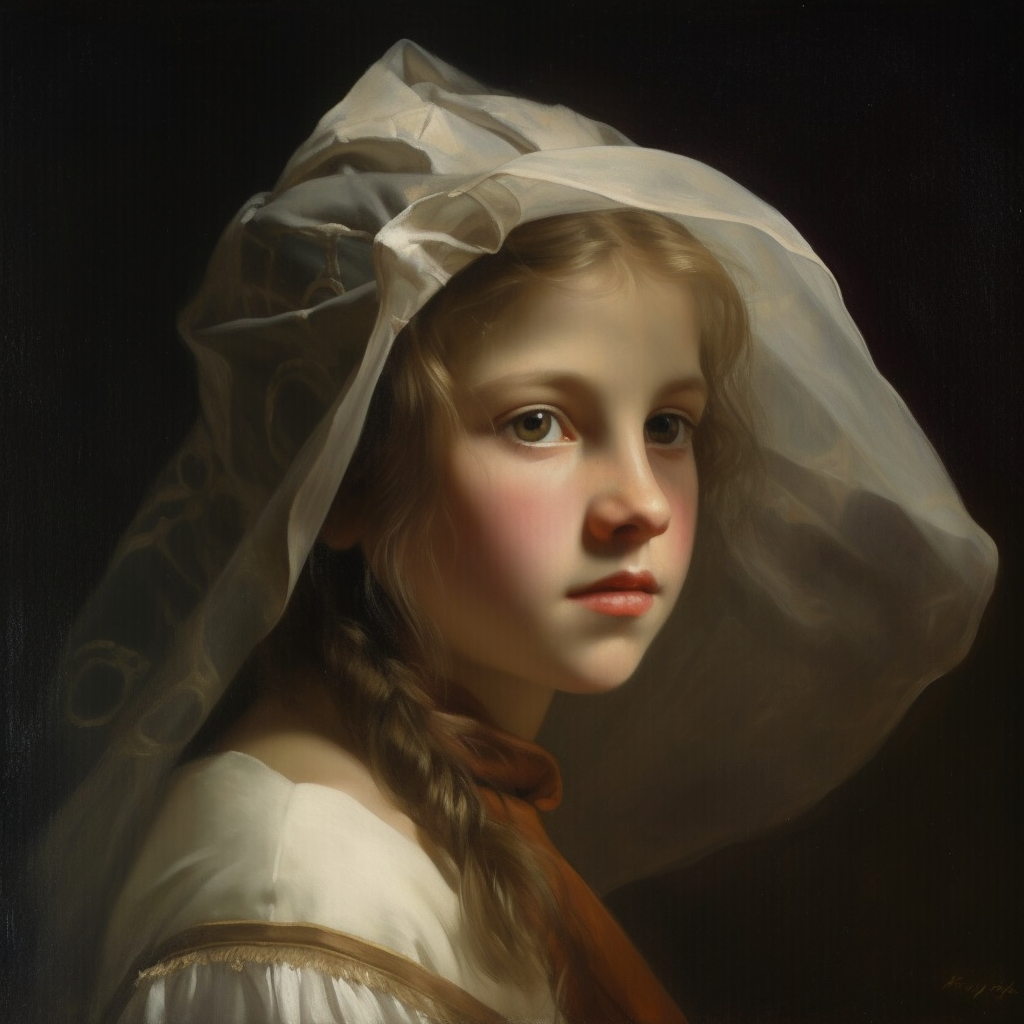 | Veiling Flare | Refers to the phenomenon that when light passes through a lens or lens, the reflection or scattering of light passing through the glass or lens causes scattered rays in the image or makes the final imaging appear distorted. | / |
 | Crepuscular Rays | Dawn and dusk light. Also known as sun pillars, they are beams of light formed by sunlight reflecting in clouds or dust. Because only enough light can penetrate through the clouds or shine at the right angle during sunrise and sunset, Crepuscular Rays usually only appear at these times. | Crepuscular Rays typically form distinct beam-like rays on the clouds, giving a beautiful feeling. |
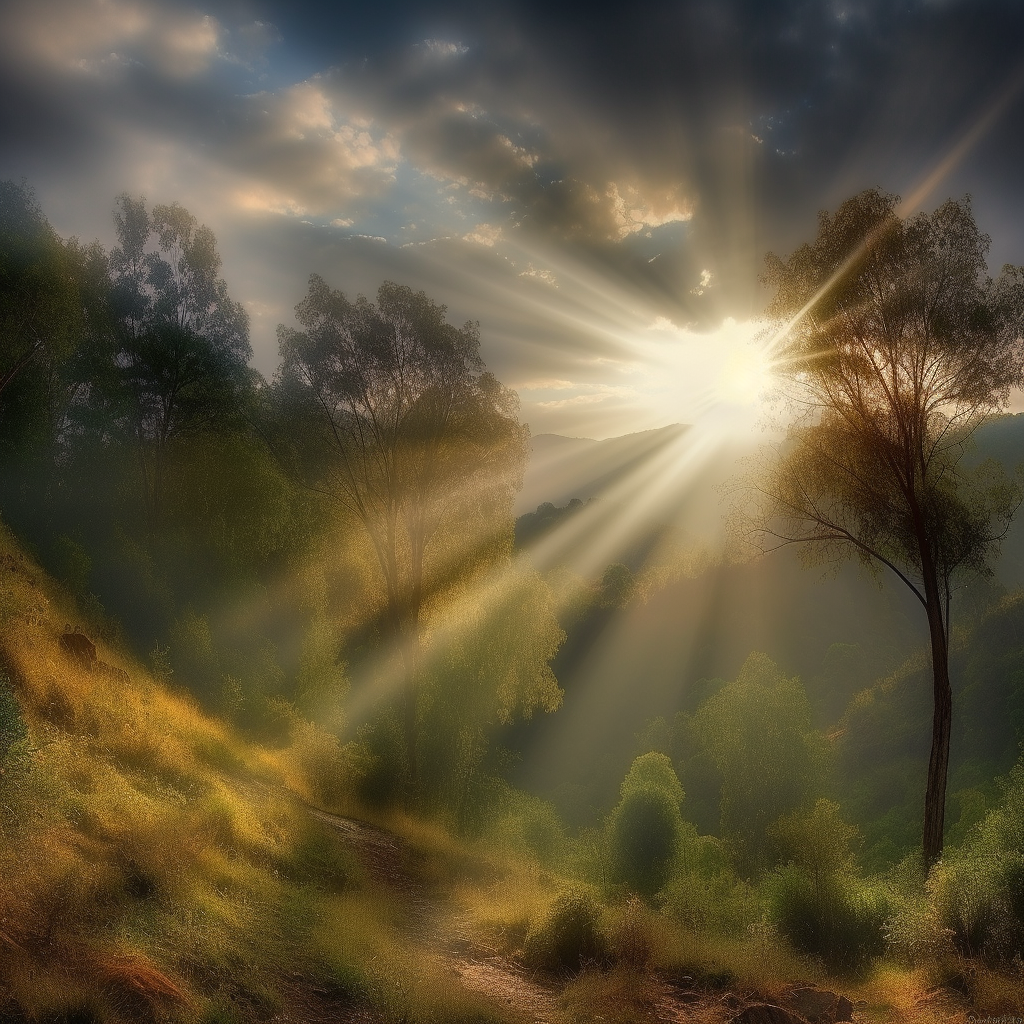 | Rays of Shimmering Light | Twinkling light. Refers to the phenomenon of light refraction that occurs during light scattering and refraction. In certain specific environments, when light passes through atmospheres with different densities and temperatures, it will produce an effect of refracted and scattered light, thus forming a twinkling beam effect. | |
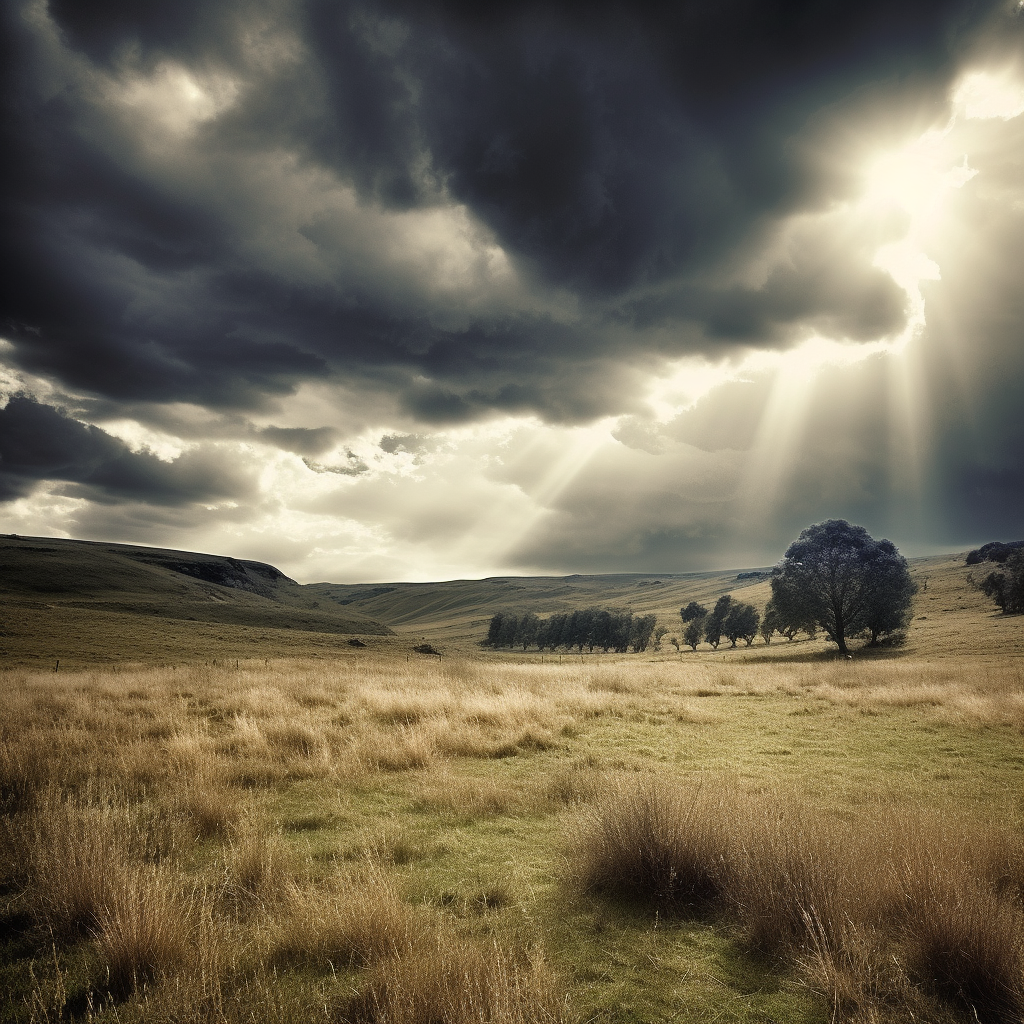 | Godrays | Godrays. It is a bright light stripe effect formed when light passes through clouds, tree branches or other obstacles. Godrays usually appear when the light is strong, dividing the light into stripes and creating a dreamy effect, also known as one of "crepuscular rays". |